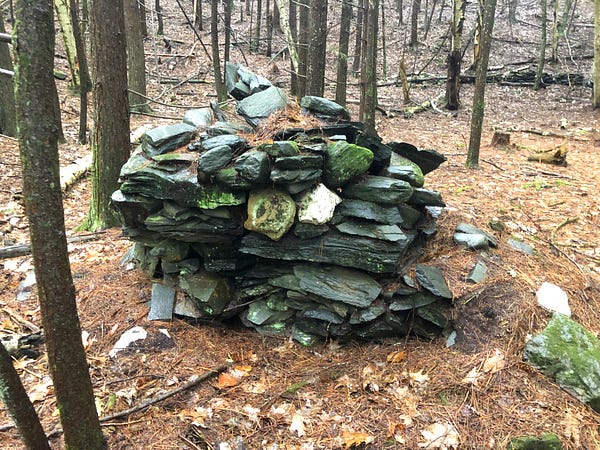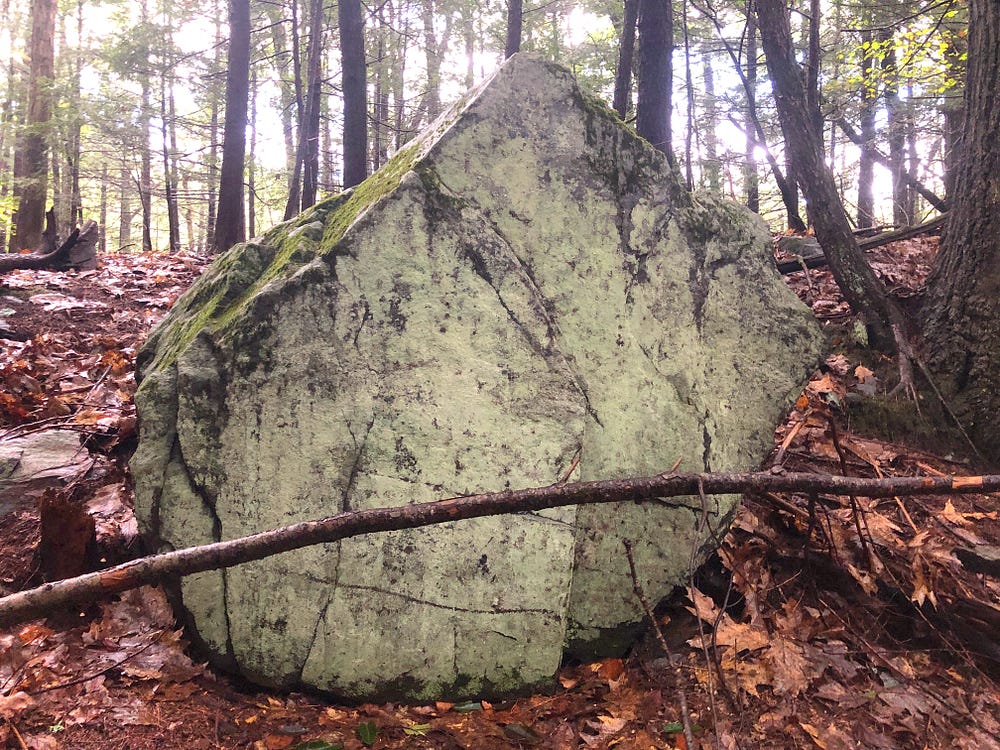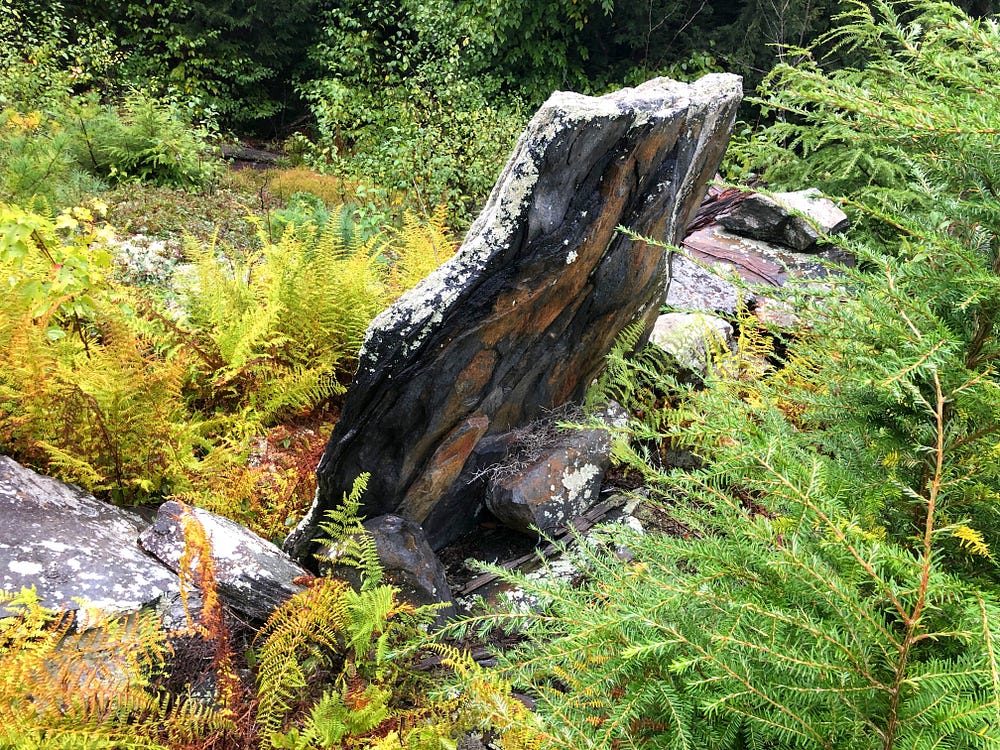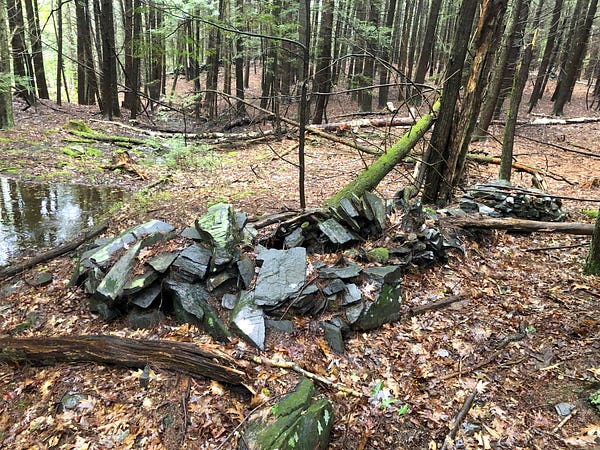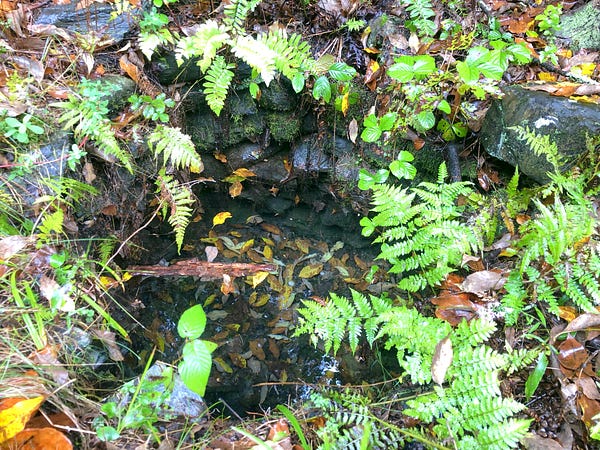A New Look At Old Vermont Stonework
Investigating A Possible Ceremonial Stone Landscape In Southeastern Vermont
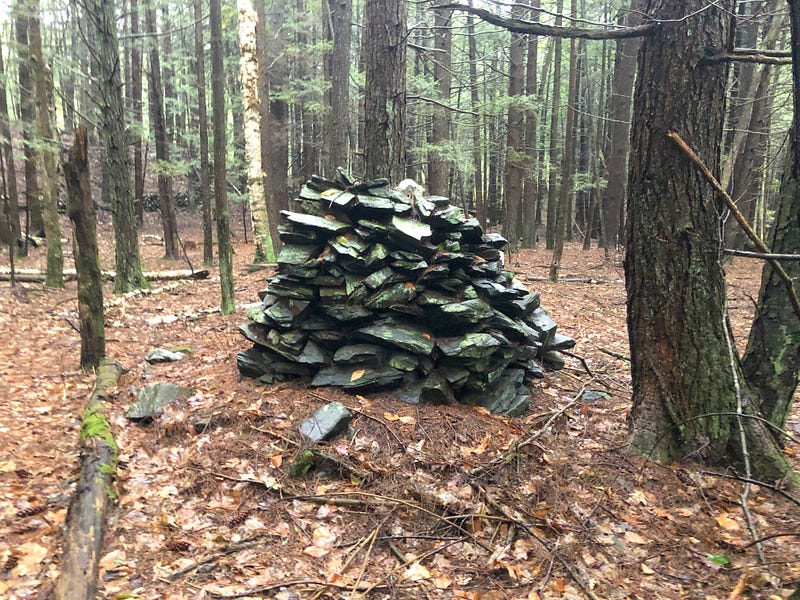
Investigating A Possible Ceremonial Stone Landscape In Southeastern Vermont
Vermont is larger than some realize — takes at least three hours to drive it’s length. Took me almost three hours on the Autumnal Equinox to travel from my home in Northwestern Vermont down to a new-to-me stone site in the Southeastern part of the state.
Back in July, the landholder posted photos of the stone features they’d found on their property in my Ancient Stone Mysteries of New England Facebook Group, looking for help in figuring out what they were. From his photos and video, they looked to me like elements of an Indigenous Ceremonial Stone Landscape, the stonework similar to that I’d seen elsewhere, such as Lewis Hollow on Overlook Mountain in Woodstock, New York. We had a long discussion about the stonework, and what they might be finding on their land.
A Ceremonial Stone Landscape in the Catskills
The Stone Effigy Rows and Manitou Hassanash (Cairns) of Lewis Hollowglowinthedarkradio.medium.com
This possible Ceremonial Stone Landscape was discovered on a ridge near Interstate 91 and the Connecticut River. Possible Indigenous Stone Assemblages (similar to European cairns in appearance) were found at the site, as well as Serpentine Stone Rows (likely Serpent Effigy Rows), and even an apparent Equinox-oriented Standing Stone.
I’d hoped to see the stonework for myself, and the landholder invited me to visit. But the Vermont summer turned hot August through September, pushing my trip back until the end of the season, the First Day of Fall.
The day had a stormy start, but after the wait, I wasn’t letting a little rain stop me. The forecast predicted clearing sky after noontime and I headed south hoping for the best. But the rain continued as I arrived at the site.
My hosts were kind enough to greet me with hot coffee… and a raincoat I could borrow. After taking a look at their property plot and talking a little about Stone Prayers and Ceremonial Stone Landscapes, we headed out in the dwindling rain to begin our tour of some of the stone features found on their land.
Several potential Serpent Effigy Rows ran along low rounded ridges that encircled an oval-shaped hollow. Likely Sacred Stone Assemblages still perched in the hollow, though they showed some wear and tear from the ravages of time and people.
The potential Serpent Effigy Rows seemed to display large Serpent Heads, angular and scaly, akin to ancient Asian Dragons and some Indigenous Great Horned and Feathered Serpents. Quartz accented possible Serpent Features and suggested white striping or coloring of some Serpents.
Two Stone Assemblages sat together, or nearly together, in the middle of the hollow towards its southern end. These sat on a slightly raised part of the hollow floor, and may have been connected at one time. There may still be connecting stonework or bedrock beneath the pine needles and duff.
The coursework and organizing design on these wasn’t Colonial. Nor were these random piles of stones, but planned constructions.
An abbreviated Effigy Row curved along the base of a ridge nearby. Logging, Power Line work, and a Pig Farm all disturbed this area at different points, leaving many stone rows sadly fragmentary.

Towards the Northern end of the hollow, a possible Directional or Effigy Stone pointed up the rounded ridge to a Third possible Sacred Stone Assemblage. This Third Assemblage also appeared to have sustained damage over time.

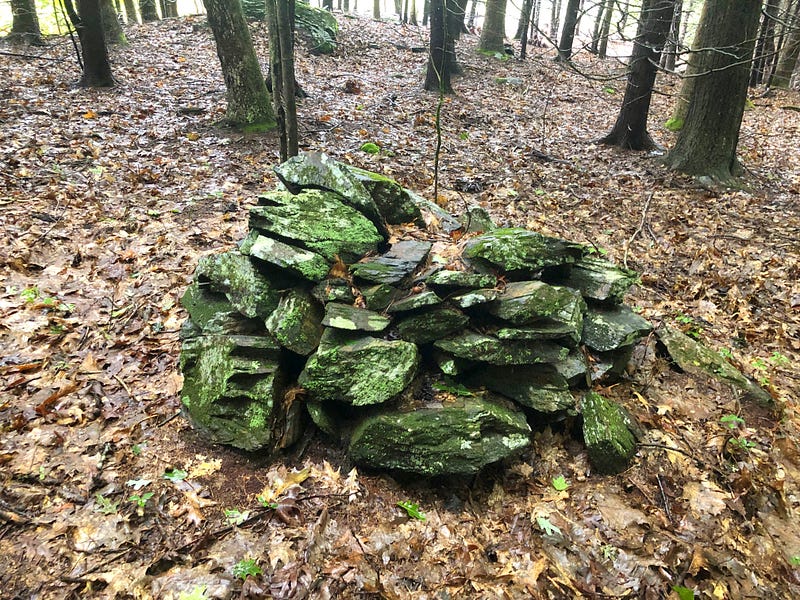
One longer-running possible Effigy Row rolled out from under the tree cover up onto the cleared area beneath nearby Power Lines. This row also possesses what appear to be striking Serpent Features constructed out of its stones and built into its stonework.

But that’s not all this stone row had to offer. Atop a rounded a ridge, a possible Standing Stone rose, propped up straight like a fin in the middle of the row of stones. The Sun Seeker App showed a potential Equinox Sunrise Alignment along the top of the stone, looking East.

More stone row fragments appeared and disappeared on the rounded ridges encircling the hollow. These occasionally displayed apparent Serpent Effigy Forms and were often Serpentine, wending across the rounded ridges and heading for vernal pools newly filled by a morning’s torrential rain.
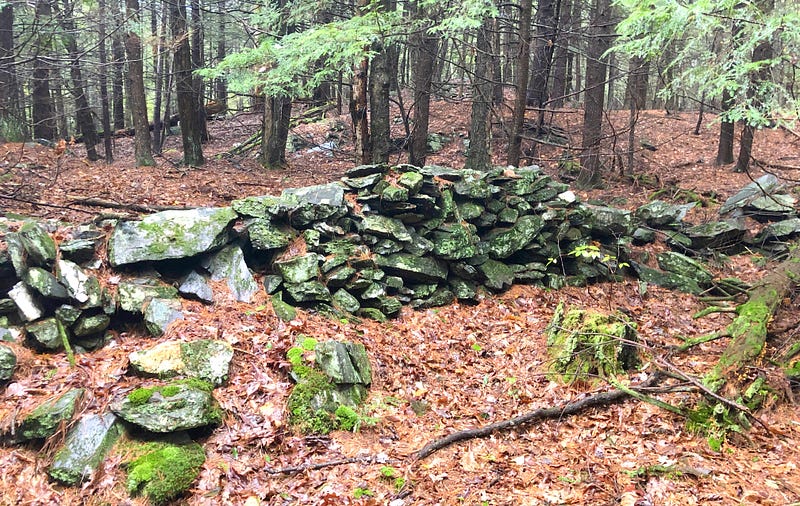
Old stone rows found lower on the hill appeared to be involved with water, though whether this was by intention is debatable. It had rained all morning; some of the water flowing down the hill from the hollow above gathered behind an old stone row turned into an ersatz retaining wall and dam, creating a waterfall.
Two old stone-lined springs or wells appeared downhill from the hollow. There was also an enigmatic circle of stones, like an unused campfire pit, on the edge of the clearing below the hollow.
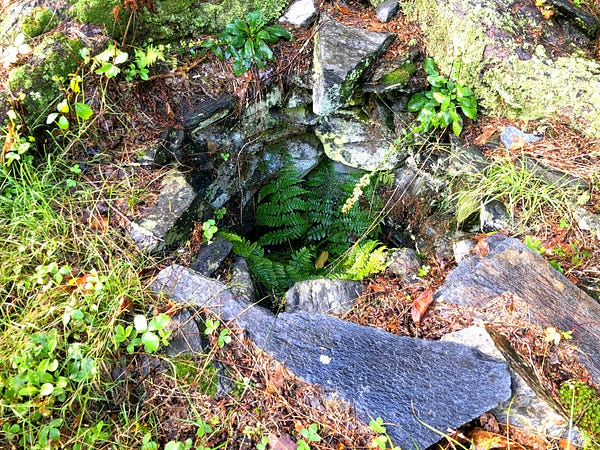
If you’d like to see more, please check out my YouTube video presentation on my visit:
This site is on private property, so the location will not be revealed here. Great Thanks to the Property Owner for allowing the visit and the coverage. We have arranged for a field trip to this new site to be a part of the NEARA (New England Antiquities Research Association) Fall Conference in early November, also in Southeastern Vermont. Just look for the field trip associated with me, this article’s author, Mike Luoma.







